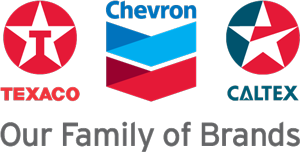An Insight: Factors Governing Engine Technology


Over the years, automobiles have steadily evolved for the better. Notably, hi-tech electronics like smart sensors, mobile connectivity, assisted driving features, and the rest have made driving more comfortable and safer. But, the most exciting improvements have taken place out of sight.
Engine technology is rapidly getting better because of three reasons:
- Governmental and market pressure to reduce carbon emissions.
- Increase in demand for engines that consume less fuel.
- The need for speed while not compromising on the first two criteria.
According to the UAE standard for fuel efficiency, based on a technical assessment undertaken by the Ecological Footprint Initiative, a federal-level cross-sectoral partnership, in order to provide the scientific basis for the policy, the proposed CAFÉ standard in UAE sets annual average sales-weighted fuel economy targets for each manufacturers up to 2028, with the potential to improve UAE fleet’s fuel efficiency from the current average of 12.1 km/l to 20.8 km/l by 2028, resulting in massive savings fuel and carbon emissions in the long run.
All vehicles from 2017 model-year entering the UAE will be rated according to their fuel-efficiency levels, according to the Emirates Standardization and Metrology Authority (ESMA).
These efforts are directed towards improving the environment and promote eco-friendly vehicles, while offering the consumers a better idea of their vehicle’s fuel efficiency.
An important caveat here is that not every car needs to meet this standard—the manufacturer must see that their fleet, which most likely includes large SUVs, pickups, hybrids and electric vehicles, has the mandated fuel efficiency average. Currently, 35.5 miles per gallon is the standard.
Stringent fuel economy requirements have been the prime mover for newer engine technologies like:
- Gasoline Direct Injection (GDI) - GDI provides two advantages—performance and fuel efficiency—by directly injecting fuel into the combustion chambers at high pressure.
- Turbochargers – Turbocharged engines were exclusively used in racing and high-performance sports cars, but now, they are making their way into the everyday use passenger segment. Turbo engines provide more power by forcing the extra compressed air into the combustion chamber which gives an extra power boost. As of 2015, 21% of new vehicles had turbocharged engines, and the number is expected to jump to 80% by 2025.
- Downsizing – The latest compact cars have engines as small as one litre to reduce mass and weight. The size reduction automatically translates into better fuel efficiency. The technology has advanced to the point that even smaller engines don’t need to sacrifice horsepower. As a reference, today’s six-cylinder engines produce as much power as eight-cylinder engines from the previous generation, and the current four-cylinder engines outperform yesteryear’s six-cylinder counterparts.
The evolution of newer engine technologies has not always been a smooth ride. Fuel-efficient engines that don’t compromise on power encounter a phenomenon called LSPI (low-speed pre-ignition). This unwanted and uncontrolled event can cause severe damage to the engine over time. LSPI is a severe issue and has resulted in many warranty claims. To resolve the unwelcome side-effect, automakers globally are working with institutions like the American Petroleum Institute and major lubricant producers, including Caltex Lubricants.
The diagnosis is that combining many advancements into a single package causes incredibly high stresses inside the engine and better engine oils are the need of the hour. Advanced engine oils can protect all parts of a small, turbocharged, GDI engine that runs hotter, experience more stress, and has a high power density. That is why OEMs have started using synthetic oils of ever-thinner viscosities because they reduce friction and protect the engine.






























